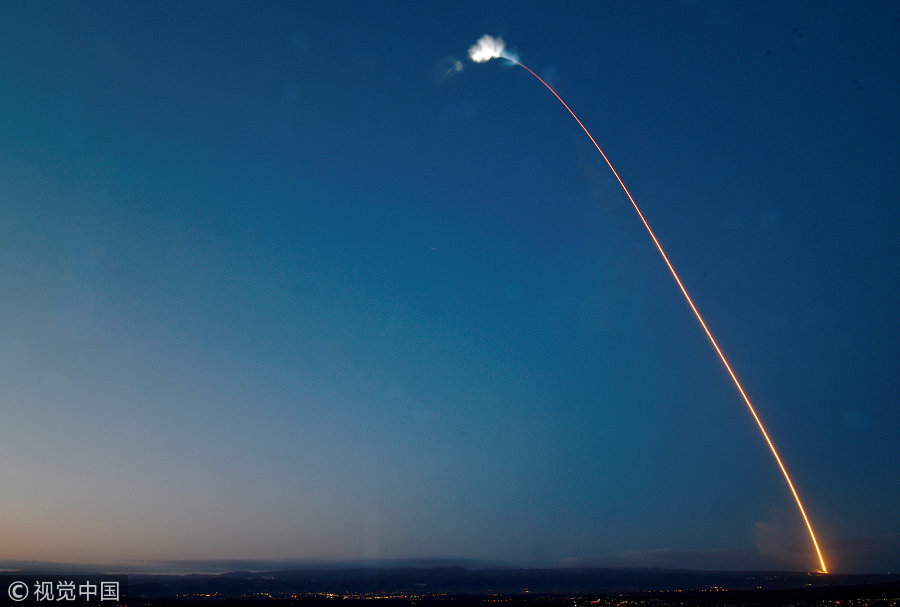SpaceX launches Falcon 9 with 1st broadband internet satellites
Xinhua | Updated: 2018-02-23 10:28

The company has been relatively mum about the debut of its Starlink satellites, and about the entire program itself.
"The Falcon launch carries 2 SpaceX test satellites for global broadband. If successful, Starlink constellation will serve least served," Musk teased on Wednesday.
According to the open files between SpaceX and the US Federal Communications Commission (FCC), in the coming years, the private US space firm hopes to create a giant constellation of about 12,000 of interlinked broadband-internet satellites that will orbit in a synchronized dance above Earth, delivering broadband access anywhere in the world.
Some 4,425 satellites will sit at low earth orbit (LEO), an estimate of 1150 to 1325 kilometers above Earth, while another 7,518 satellites will be launched into very-low-earth orbits (VLEO), some 335 to 346 kilometers above Earth.
According to a tally by the Union of Concerned Scientists, there are 1,738 satellites currently orbiting Earth.
Earlier this month, FCC Chairman Ajit Pai gave his endorsement to SpaceX's application to operate two huge constellations of broadband satellites.
Falcon 9's first stage for the mission previously supported the FORMOSAT-5 mission from SLC-4E in August 2017. SpaceX didn't attempt to recover Falcon 9's first stage after Thursday's launch, because it "was an older version booster."
However, there is another heightened interest in this launch.
By using "Mr Steven," a large navigable platform ship with extended "arms" and a net strung between them, SpaceX was trying to "catch" at least one of the two payload fairings that enclose the satellite at the top of the rocket.
These fairings were separated from the rocket at about three minutes after launch.
The value of these fairings is about six million US dollars, and recovering and reusing them would save money for SpaceX. Currently, a typical Falcon 9 launch costs around 62 million US dollars.
























